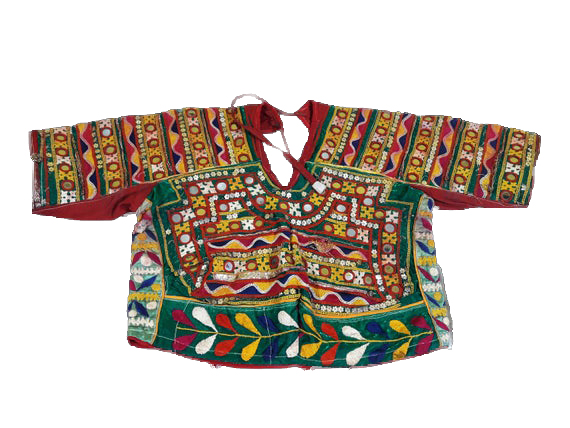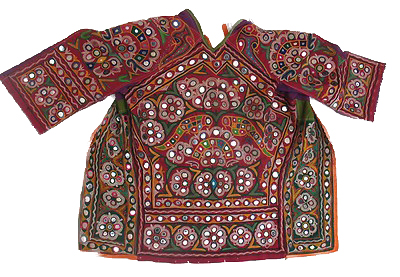The Choli
- kalash

- Feb 23, 2012
- 3 min read
Updated: May 12, 2021
QU: So, what is a choli?
ANS: Well basically it's an Indian word for a type of blouse, often short sleeved and backless and cropped to bare the midriff, but there are many variations
Anyone who has ever studied languages knows that we are always looking for the most efficient way to convey what we humans want to say and the English language has incorporated words from many other languages, either as a result of being invaded or as a result of colonising another country or peoples. Either way we absorb new words when our own vocabulary is lacking and there is no efficient word to use. Here are just some of the Indian words that are now part and parcel of the English language
Bungalow - a one storied domestic dwelling
Bangle - a type of bracelet
Pyjamas - a combination of a pair of loose fitting trousers and top worn for sleeping
Jodhpurs - a pair of trousers worn when horse riding
Gymkhana - an equestrian event to display the training and talents of horses and their rider
Khaki - a drab greeny brownish grey colour
Think about how you would describe the following in just one word
- these are all of Indian origin Avatar, Shampoo, Dungarees, Juggernaut, Dinghy and Jungle
Isn't it easy to see how it makes so much sense to use just one word instead of a whole description?
It was Masha Archer who introduced the choli to our costume, a garment worn with a skirt or under a sari by Indian women and depending on the region it may have an open back or an enclosed back. It allowed arm movement because of a large gusset under the arm but also showed off the bare back by being completely open save for the tie fastenings, because she wanted to accentuate the midriff in order to show off the dance but she also wanted her dancers to be dressed, rather than scantily clad in just a bra.
One of Masha’s students, Carolena Nericcio, founder and creator of FatChance® Style belly dance, remembers that they had a hand drawn tissue paper pattern which they would pass around. Each dancer carefully reproduced the pattern on to a flattened brown paper grocery bag making whatever individual adjustments were needed to create the best fit. Different sleeve lengths added variety to the designs, from short cap sleeves to three quarter or full length, whilst the flattering V neck made the neck look longer and was perfect for showing off the gorgeous necklaces. They were also cheap to make as they took so little fabric, only half a yard enabling the dancers to create many costumes with just one basic black skirt and an assortment of cholis. In pre-internet and e-Bay days the dancers had to source their eclectic costuming from the San Francisco import and second hand clothing shops, with vintage and recycled dresses being the favourites for cholis.
Several years ago Carolena returned to her fashion business roots to create her own line of clothing under the brand name Bessie (after her mother). In her youth she studied clothing design and production at the Pacific Fashion Institute, followed by textiles and weaving at San Francisco State University. Her fascination with ethnic textiles and garments brought a realization that these garments used the hand woven loom width fabric efficiently with no wastage of fabric, which would have taken the weaver a long time to make. Excess fabric could be tucked in a pleat to be let out at a later date when a child grew taller, whilst the tie fastenings could be loosened to allow for pregnancy and bigger breasts.
Her study of the choli led her to conclude that the tiny fancy ornamental cholis, made by a young girl barely in her teens for her wedding, were to show off her handiwork rather than having a flattering fit.
FCBD® style dancers always wear a choli and would never just wear a bra on its own, so it's an integral part of our costume.
Carolena still sells her own pattern, produced in collaboration with Folkwear, for those wishing to sew their own choli and of course, each pattern piece neatly fits to utilize every scrap of fabric.
It was Gwen Heckeroth of Flying Skirts who first introduced the stretch choli, which has been copied by many other costume suppliers and seamstresses without any credit to her. She experimented with and adapted Carolena's original pattern to produce the very successful easy-fit choli - much more comfortable and easier to dance in than the fabric ones that need underarm gussets to allow movement.
Sadly importing from the USA is an expensive option for us in Europe as we get hammered by import tax and value added tax.
So if you want an inexpensive solution here’s a great tutorial on how to transform a T shirt into a choli:











Comments